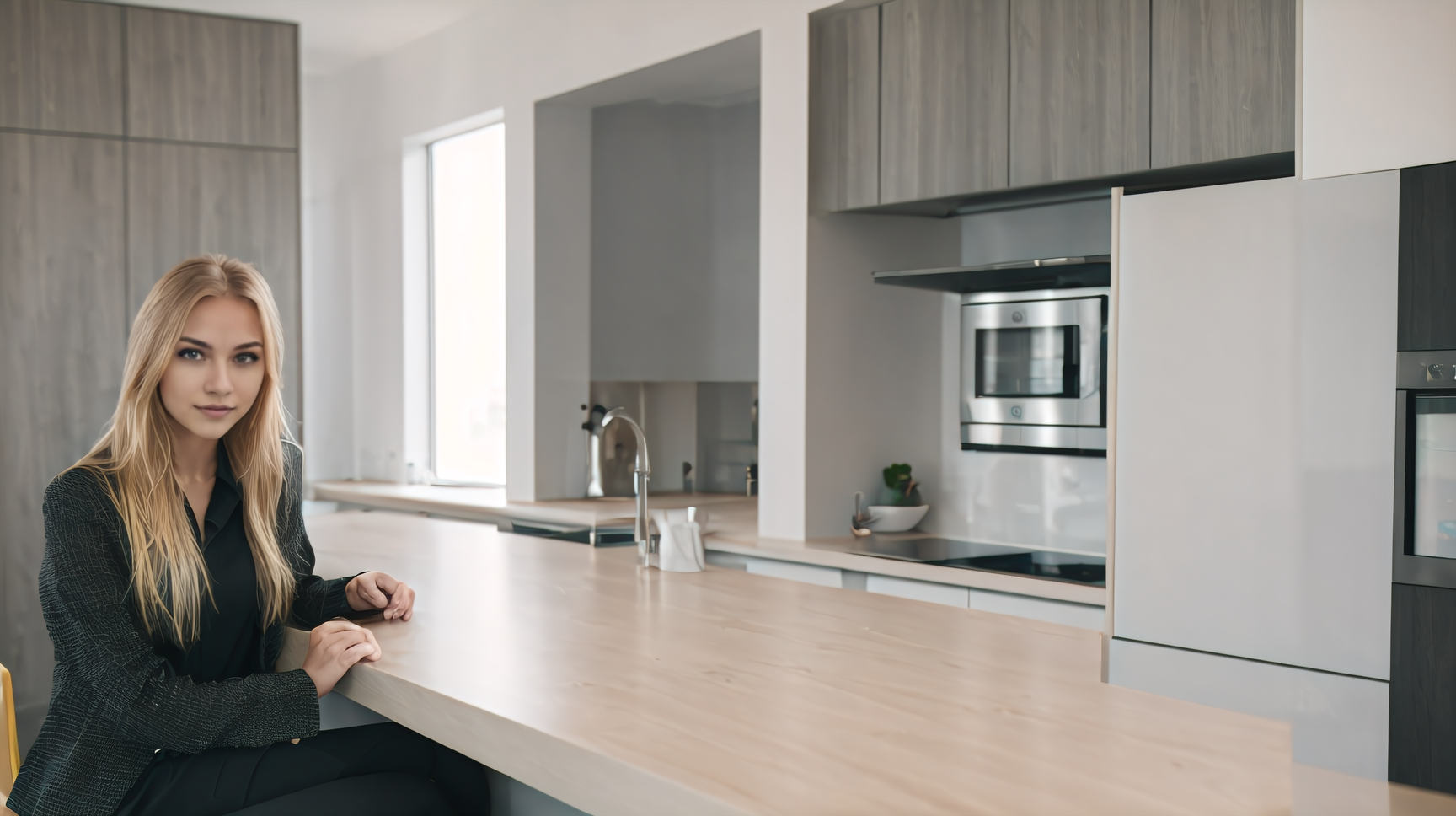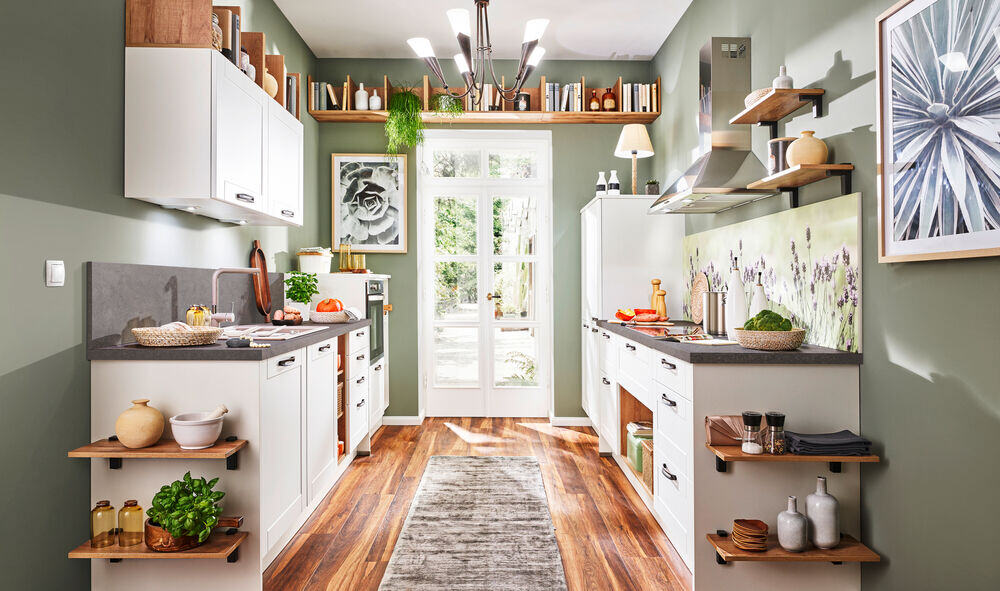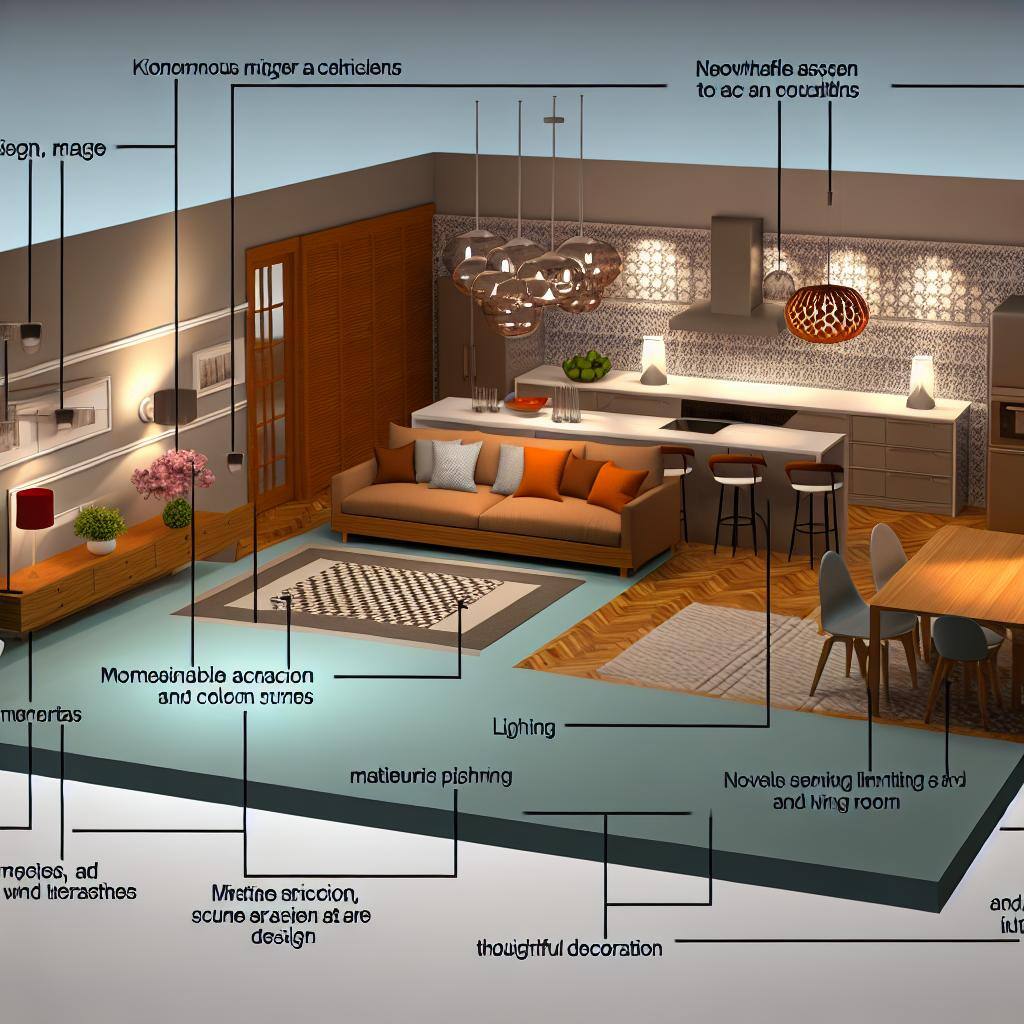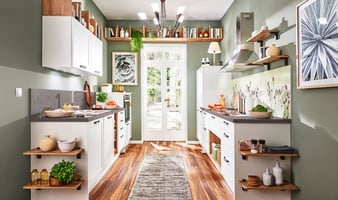Kitchen Trends 2024: What's In and What's Out?
The kitchen is the heart of the home, a space that goes beyond just cooking. It’s a ...
Integrating the kitchen and living room into an open-plan living space is more than just a design trend; it reflects a modern lifestyle that values communication, flexibility, and spaciousness. Open floor plans promote interaction, create a sense of openness, and allow for a more generous flow of light. However, the key to a successful layout lies in creating a harmonious connection between these two areas. A seamless transition between the kitchen and living room not only enhances visual continuity but also contributes significantly to overall comfort. Here, I provide practical and well-considered recommendations to help you achieve this perfect connection.
1. Color Scheme: Establishing Unity with Accents
Choosing a cohesive color palette is one of the most effective ways to ensure visual harmony between the kitchen and living room. Colors greatly influence the perception of space and can subtly link different areas together.
2. Material Selection: Consistency with Contrasts
Materials play a critical role in linking different functional areas. Consistent material selection creates a unified look, while intentional contrasts can define distinct zones.
3. Space Planning and Furnishing: Function Meets Aesthetics
Thoughtful furniture arrangement is essential for integrating the kitchen and living room both functionally and aesthetically. This involves not only creating visual connections but also ensuring practical use of space.
4. Lighting: Balancing Atmosphere and Functionality
The right lighting is key to achieving a seamless transition between the kitchen and living room. Different types of lighting can zone the space without disrupting visual continuity.
5. Decoration: Connecting Through Details
Decorative elements are the finishing touches that link the two areas. With carefully chosen accessories, you can highlight the distinct functions of the kitchen and living room while maintaining visual unity.
Conclusion
An open-plan kitchen requires thoughtful design that meets both functional and aesthetic needs. Striking a balance between the unity and individuality of the two spaces is crucial. With a cohesive color and material palette, sensible furniture arrangement, and carefully coordinated lighting, you can seamlessly connect the kitchen and living room. This approach not only makes the space feel larger and brighter but also transforms it into a welcoming, harmonious center of family life. By following these design tips, you’ll create an open-plan kitchen that is thoughtful, stylish, and, above all, comfortable.
Lara is the creative guest author behind selected articles on our blog "LS Küchen Wohnen & Service". Her passion for kitchens and interior design motivates her to share her extensive experience and inspiring ideas with our readers.
Lara likes to regularly bring a breath of fresh air to our blog. Her articles are characterized by a combination of in-depth specialist knowledge and practical tips. She attaches great importance to the fact that her recommendations are both functional and aesthetically pleasing while always being budget-friendly.
Our mission at "LS Küchen Wohnen & Service" is to give everyone the opportunity to realize their dream kitchen. Lara and our dedicated team firmly believe that great kitchen design should be accessible to everyone!
Join Lara on her creative journey and discover her inspiring articles full of tips and innovative ideas for your own kitchen. Our team is always ready to actively support you on your way to the perfect kitchen.


The kitchen is the heart of the home, a space that goes beyond just cooking. It’s a ...

Today I’m excited to share with you a kitchen that instantly captivated me. This ...

Integrating the kitchen and living room into an open-plan living space is more than ...

The kitchen is the heart of the home, a space that goes beyond just cooking. It’s a central...

In a kitchen like this, cooking becomes a pure delight – where modern design meets true comfort....

Today I’m excited to share with you a kitchen that instantly captivated me. This space beautifully...